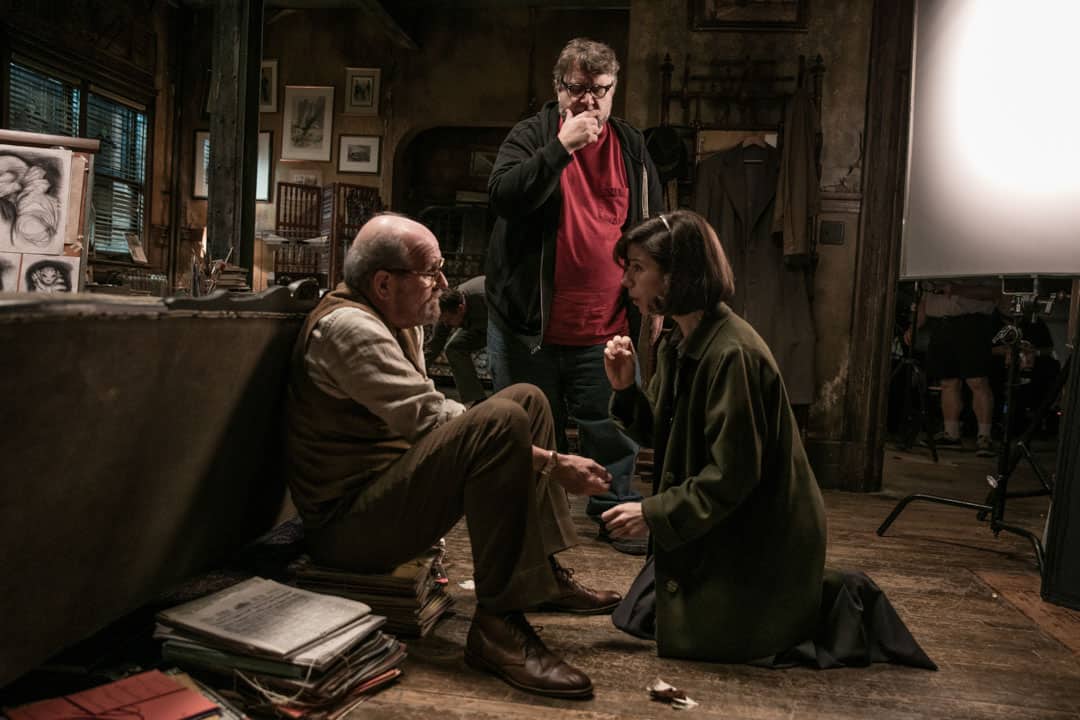Auteur director Guillermo del Toro’s newest film, The Shape of Water, is the perfect distillation of the director’s work with both the fantastic and the human. The film follows the growing relationship between mute custodial worker Elisa Esposito (Sally Hawkins) and a mysterious, humanoid sea creature (Doug Jones) being studied in the underground research facility where Elise works.
The film features incredible performances, not only from Hawkins’ mute protagonist, but also from the rest of its star-studded cast. Characters play off of each other’s unique qualities to elevate the film’s tone.
American actor Michael Shannon plays the role of Elisa’s evil boss, who threatens the other characters at every moment. Octavia Spencer and Richard Jenkins play Elisa’s best friends, who grow in tandem with her character, despite their abundance of lines in comparison to hers.
The Varsity was able to speak with del Toro in a conversation with other student newspapers from across North America about his new film and his career thus far.
del Toro noted that the film’s setting in 1962 Baltimore evokes memories of the Cold War and the space race. “It’s [also] the last fairytale time in America, a time in which America dreams itself into what we conceive as the modern America.”
“The country becomes obsessed with the idea of the future,” he said. “I thought that, and the Cold War, were perfect settings to bring a creature from the ancient past and a love story in a time of difficult communication.”
del Toro uses the supernatural qualities of the fantasy genre to create a tale all about interacting with “the other,” which any society can imbue with its own specific interpretation. The film’s morals and themes extend beyond the constraints of its own world. Instead, it indirectly comments on many of the swirling feelings in this intense political moment.
del Toro, though, has tried to focus on letting the film present a timeless message.
“[The Shape of Water] is a movie about our problems today and about demonizing the other and about fearing or hating the other, and how that is a much more destructive position than learning to love and understand,” he said.
“If I say, ‘Once upon a time, in 1962,’ it becomes a fairytale for troubled times. People can lower their guard a little bit more and listen to the story and listen to the characters and talk about the issues rather than the circumstances of the issues,” said del Toro.
The film is not only entertaining, but it is emotionally potent, incorporating powerful themes of acceptance, sometimes without uttering a word. Its characters overcome societal obstacles, including class and disability, to create the best lives for themselves and those around them.
The people who care about each other in the film are able to do so despite any preconceived societal barriers of class, sexuality, or physical disability. The film is, at its core, a story about the power of both platonic and romantic love.
“It’s impossible to talk about love. You can sing about love but you cannot talk,” said del Toro, commenting on his reasoning for eschewing dialogue between the two misfit protagonists.
The Shape of Water is the perfect combination of fantasy and reality. All in all, the film’s stunning cinematography and performances are no far cry from much of del Toro’s previous work.


